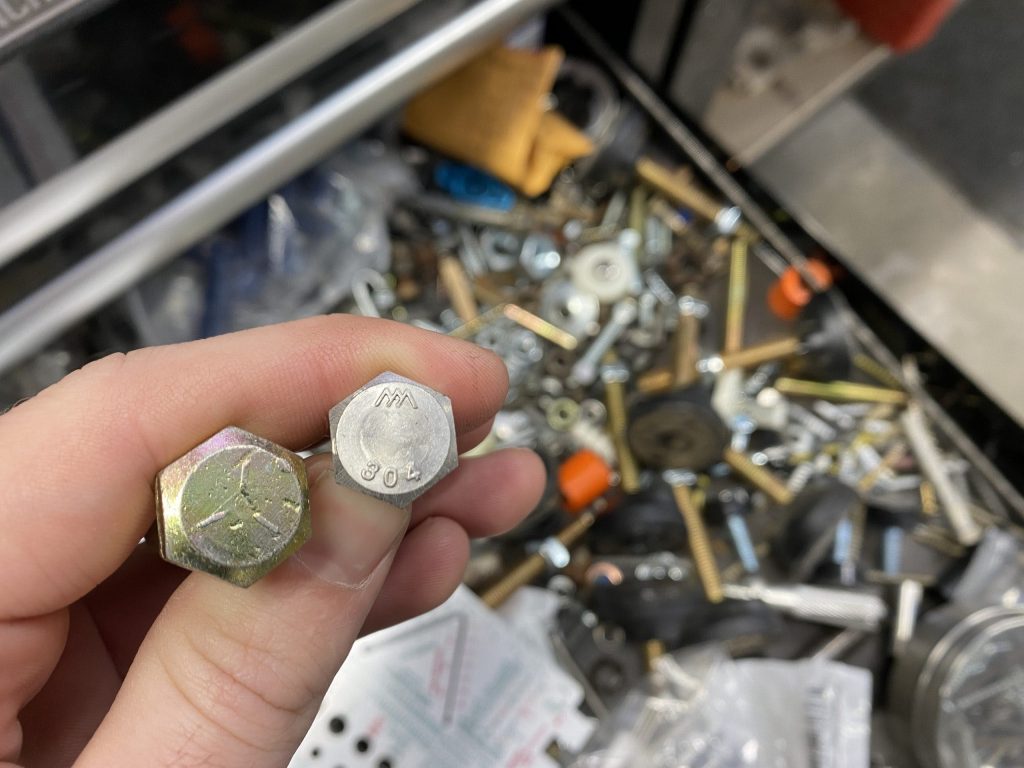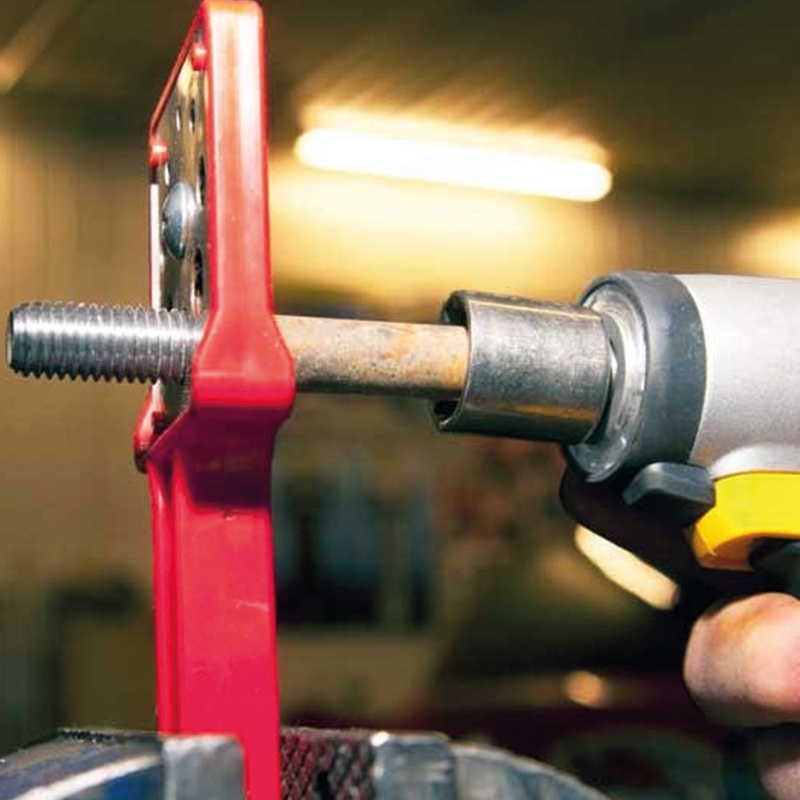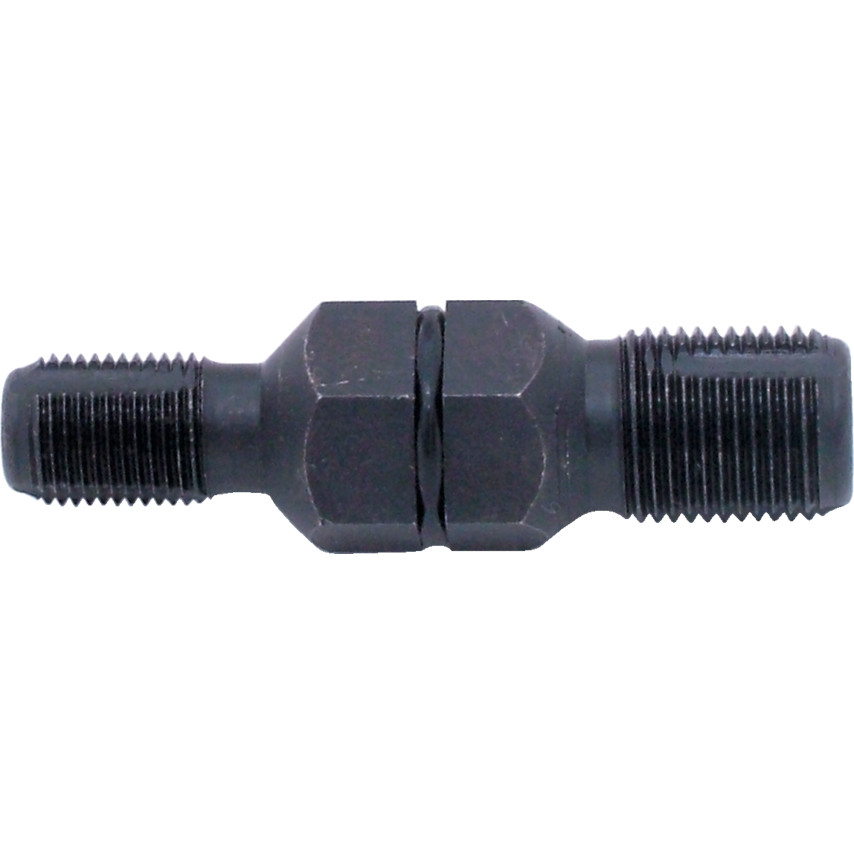Bolts, screws, rusty threads, damaged threads, they’re all lurking somewhere on a classic car just waiting to drive you nuts. We’ve talked about threads and how to make them from scratch before, but there is a halfway house and that’s cleaning and restoring threads that haven’t suffered so much from years of corrosion, wear or abuse, that they can’t be reconditioned and continue to live a healthy life.
Why would you want to bother and not just replace them? Well, that depends on how much you value originality, or to put it another way, how much the car warrants it. On older cars with imperial (let’s use the proper name) “fixings”, they can be quite distinctive, even unique in shape and appearance. If they are external and visible, the look of a nut or bolt head can play a big part in sustaining the overall look and feel of the car.

Lazy replacement of those fixings with generic bolts and screws sticks out a mile and to my mind is at odds with creating the time-warp feeling that makes a classic so special. In some cases (like the ’68 Mustang I’m restoring) the threads are all Imperial but many of the bolt heads are of a unique design and black zinc plated. Replacing them with generic bolts would be easy but they would stick out like a sore thumb as soon as the bonnet was opened, screaming, rather than muttering, unoriginality.

So what can be done? If a fixing is ruined or no longer safe, there’s no option but to replace it. If it’s something out of the ordinary, an accurately re-manufactured replacement may be available from a specialist. If the threads are intact but corroded and clogged with rust and generally filthy and horrible, that’s when you can swing into action and there are some nifty tools around to help with that.
Threads can be restored with a wire brush (preferably a rotary brush on a bench grinder or drill) and minor damage cleaned up with a profiled needle file, but there are limitations to that approach. A less obvious one is that wire brushes, though great for cleaning and removing loose rust, tend to burnish the boundary layer of rust close to the surface of the metal. That’s annoying because it’s a job half done, like only cleaning some of your teeth in the morning, and it can also leaves the profile of the threads rounded and lacking definition.
How to deal with that? If you have taps and dies for cutting new threads they’re just as good at sharpening up an old one but there are other things available too, like male and female thread cleaners or “chasers”. Female thread cleaners (for cleaning a bolt, screw or stud) aren’t adjustable like a die, and can restore an existing thread but not cut a new one. They come in various shapes and sizes, the classic “die nut” being one, with a hexagonal outer profile to take a spanner.


Other options include thread files (with teeth aligned longitudinally to match the pitch of various threads) universal thread chasers, and innovative tools like the “Thread Wizard” which I spotted recently. This looks like a small paddle with various sized holes in it which have embedded wire brushes in them. The idea is, the piece to be cleaned is held in a drill and whizzed up in the appropriate size hole to clean the thread.
There are also dedicated spark plug thread chasers, usually double ended and with each end sized to fit different sized spark plug threads. Bear in mind when using these that the cylinder head should be removed from the engine before use.
So yes, there are plenty of options out there for working on and restoring nuts, bolts, studs and screws and before throwing something away, it can be worth trying to salvage the original. For a really great finish, they can be re-plated in the home workshop too, in the appropriate bright zinc, yellow or black finish too, but that’s another story.
Read more
Socket Set: Don’t let wiring get you in a tangle
Edducation: What’s the best project car for this father/daughter team?
Elbow Grease: Cleaning your engine bay, and what to look out for









